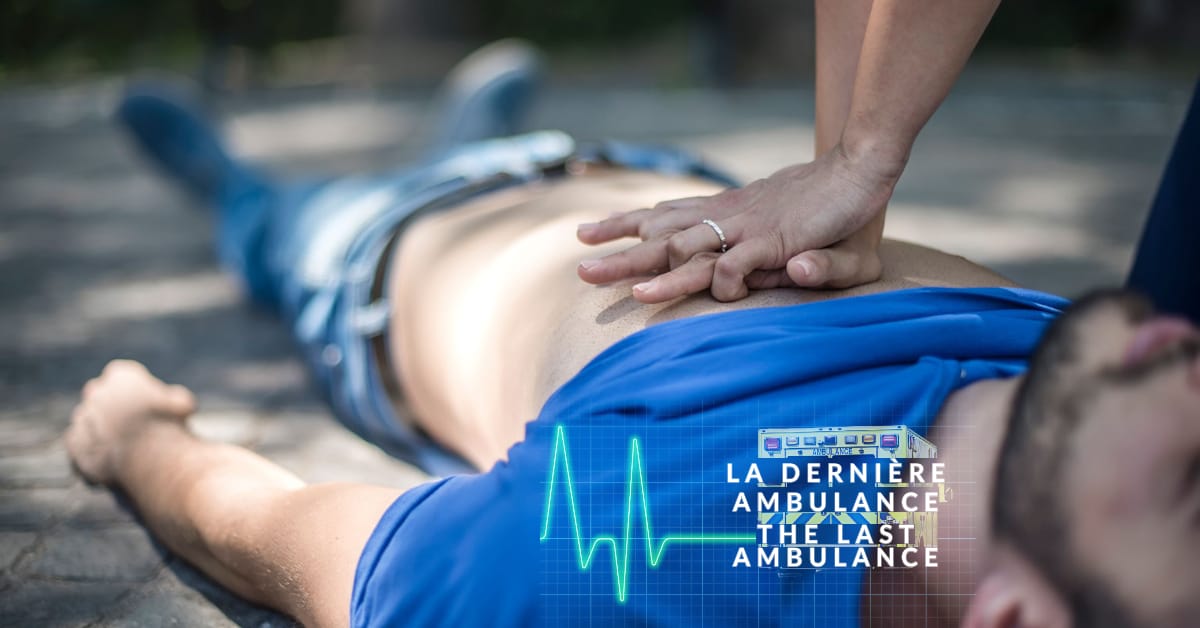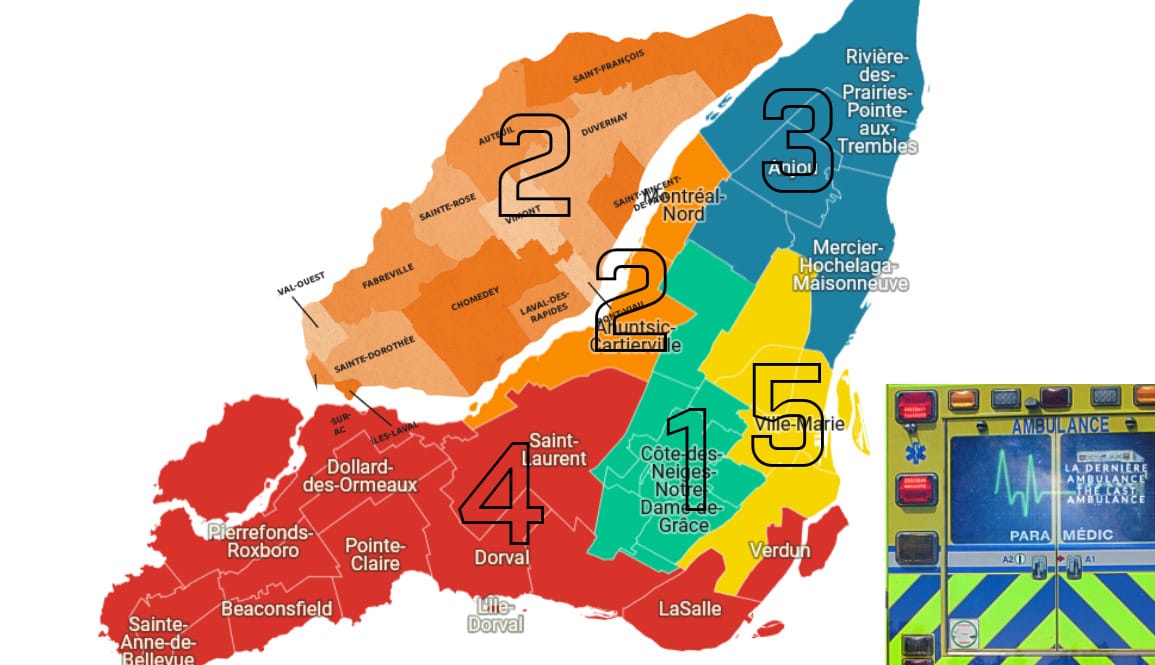Counting the minutes

with data analysis by Mike Baranchuk
After a prolonged Access to information request process, The Last Ambulance obtained all response time data for tens of thousands of calls to which Urgences-santé responded from November 23, 2023, to March 12, 2024.
We tracked each call from the creation of a call card at the communication center to the arrival of the first Urgences-santé vehicle on scene. We calculated the 90th percentile for all responded calls, meaning the time within which 90% of calls receive a response.
In the west of Montreal, the vast area known as Sector 4 by Urgence-santé, paramedics assigned to the most critical calls (priority 0) arrived within 19 minutes in 90% of cases. For priority 1 calls, which pose a risk of mortality, paramedics assigned to these calls arrived on scene within 22 minutes in 90% of cases (for 7,027 calls during the period from November 23, 2023, to March 12, 2024).
This means, of course, that 10% of the time, it took more than 19 or 22 minutes for paramedics to arrive on scene. With a call volume as high as that of Urgences-santé, this means tens of thousands of people waited a long time before paramedic-level care arrived.
The other sector with the slowest response times includes the entire territory of Laval and part of northern Montreal. Paramedics assigned to the most critical calls (priority 0) arrived within 16 minutes in 90% of cases. For priority 1 calls, which pose a risk of mortality, paramedics assigned to these calls arrived on scene within 20 minutes in 90% of cases.
In Calgary, the 90th percentile for response times to high-priority calls is 12 minutes. In Toronto, it’s 14.3 minutes. In Philadelphia, it’s 15 minutes. This is the time within which 90 percent of responses occur. For example, a 90th percentile response time of 17 minutes means that 90% of all calls receive a response within 17 minutes, and the remaining 10% take longer than 17 minutes.
For patients suspected of a STEMI (heart attack) in Los Angeles County, California, 90 percent of the time, paramedics respond to the scene, initiate treatment and then transport those patients to an emergency room within 27 minutes.
For patients with symptoms of a heart attack in Sector 4 of Montreal, 90 percent of the time paramedics arrive on scene within 22 minutes – and then initiate treatment, and then transport to an available ER.
As Kirkland Mayor Michael Gibson said in an interview with the Journal de Montréal on February 25, 2024: "It makes no sense. You could die twice in that time." Gibson reaffirmed these comments after hearing about the investigation conducted by The Last Ambulance.

Over the years, one of the usual responses to concerns and questions about Urgences-santé's response times has been to refer to the fact that first responders are often assigned to the most critical emergencies.
In fact, first responders are not assigned to all priority 0 and 1 calls, and in Laval, first responders only respond to a limited subset of the most critical emergencies.
The Last Ambulance has learned that the Quebec government intends to seek the lowest common denominator for first responders across the province rather than increase the level of funding available for services which offer more training to their personnel and better service to their population, e.g., the Montreal Fire Department.
According to anonymous sources close to the matter but not authorized to speak on the subject, the MSSS is proposing to drastically reduce the number of critical and potentially life-threatening emergencies that the Montreal Fire Department responds to, from 82,000 to 26,000, which would mean people waiting for the arrival of paramedics would have to fend for themselves until the ambulance arrives on the scene.
A cost-effective solution would be to hire paramedics to work with the Montreal Fire Department to ensure the rapid arrival of paramedical care, as is done in many major urban centres in North America. This would allow paramedics to be at the patient's side within 7 minutes of the 9-1-1 call, increasing the likelihood of a positive outcome for the patient while reducing potential costs to the healthcare system.
The Last Ambulance has been tracking ambulance response times across Quebec since the beginning of this project in February 2022, hoping to raise public awareness about the risks of living (and dying) with a profoundly dysfunctional emergency prehospital care system.
I have been regularly interviewed in the mainstream media to discuss ambulance response times in Montreal and Laval, the areas served by Urgences-santé. On almost every occasion, I have taken great care to reassure the public that, even though ambulance services are under-resourced, they are still able to respond to high-priority calls in a timely manner.
Now, I feel like I have provided a false sense of comfort.
It turns out that the timely arrival of paramedics largely depends on where you live, and in many cases, response times, even for high-priority patients, far exceed all acceptable standards.